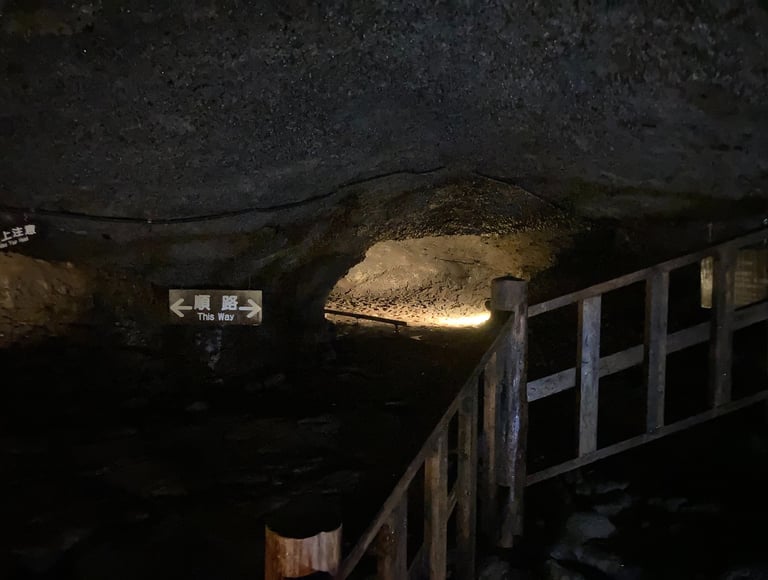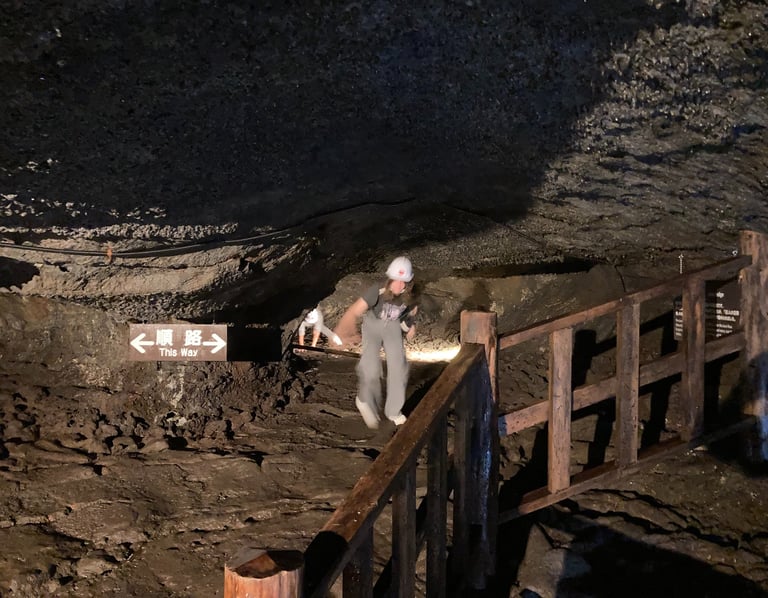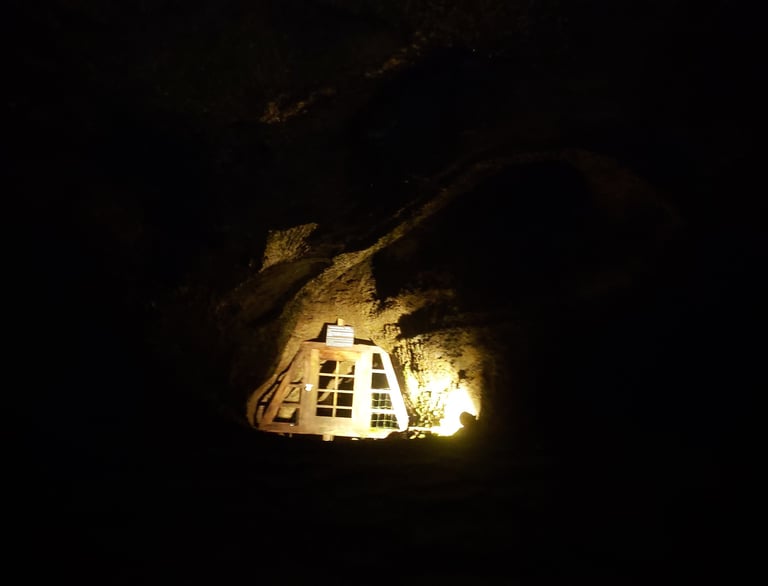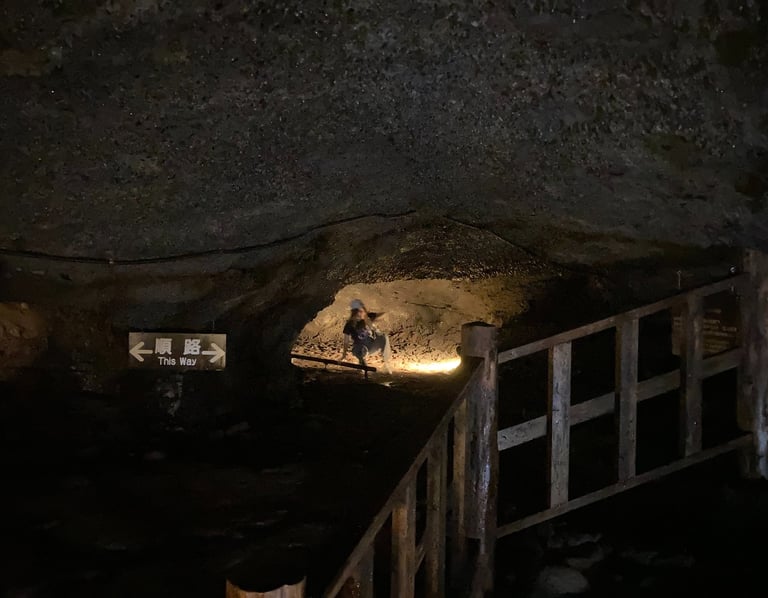What's Stopping You? Change Your Life!
From Ice to Wind
Narusawa’s Underground World
JAPAN
9/29/20254 min read
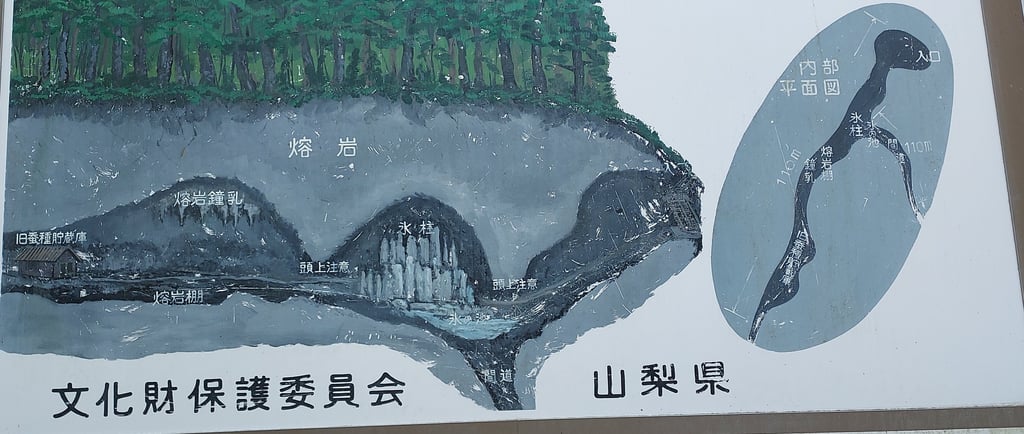

From Ice to Wind
Narusawa’s Underground World
Originally, we had planned to finish the Ice Cave adventure and then head back to the Cabbage Patch Hut for another round of Oni Koroshi. But we came out of the cave feeling amazingly refreshed — chilled to the bone from its 3 °C (≈ 37 °F) air — and decided to press on to the Wind Cave under the afternoon sun.
From the Ice Cave, we walked to the nearest stop on Fujikyū Bus Line 80. The midday sun of Yamanashi Prefecture hit us like a wall: 30.2 °C (86.4 °F) with 90 % humidity. There’s a complicated formula for calculating the heat index — the “feels-like” temperature — but let’s skip the math: 86 °F and 90 % humidity feels like 105 °F. For our bodies, it felt like we had just experienced a 68-degree temperature swing in about twenty minutes. Our bravado began to wilt.
Fortunately, Fujikyū’s signage is excellent, and it was easy to find our stop. Unlike in metropolitan Tokyo, where buses often arrive every six to ten minutes, this route runs every thirty to forty minutes. We made ourselves comfortable and passed the time watching the deer — who seemed to be watching us back. Maybe it was the heat, but they almost looked like mirages.
The buses on this line connect all three of the area’s famous lava tubes: Narusawa Hyōketsu, Fugaku Wind Cave (富岳風穴), and the rarely visited Narusawa Bat Cave. All three caves are the result of the lava flow from Fujisan. We would not be doing the bat cave this time. I like bat’s, but, having being bit by one and having to get a series of rabies shots, ( no, my insurance didn’t cover rabies shots ) I’m not sure if I want to be in a cave with thousands of them. Not yet.
When the bus finally arrived, we boarded at the bright green stop sign. In the Tokyo area, you pay your fare when you board the bus — and if you visit Tokyo, I highly recommend getting a Suica card. It works like a rechargeable debit card that you can use on buses, trains, and even vending machines. Get your name printed on it — if you lose it, you can have it reissued. (I’ve lost several nameless Suica cards over the years, probably totaling around USD 100.)
Outside of Tokyo, the system works a little differently: you board through the rear door without paying, then pay when you exit through the front door. Your Suica card won’t work here, so you’ll need coins. If you can’t figure out how much to pay, just throw in a handful of yen — the machine will spit out the extra if you overpay.
Our bus driver was patient and kind, like most people you meet traveling in Japan, but he handled the winding mountain roads like Takumi Fujiwara from Initial D. Skillful — but slightly unnerving. I’m quite sure I whispered a few prayers for safe delivery as we rounded the curves. Fortunately, it was a short ride — maybe ten minutes — as we traveled deeper into the mountain’s shadow.
We arrived safely and stepped off the bus, greeted immediately by a sign advertising corn-flavored ice cream. It’s a local delicacy. I didn’t try it, but my daughter did. Her verdict: “It tastes like corn.”
At the ticket booth, we saw the same warnings we’d seen at the Ice Cave, but this time we were issued protective helmets — a good thing, as I did end up bumping my head once or twice. The helmets also raised the anxiety level a bit. The posted map of the cave didn’t help — it looked like a maze, and we briefly wondered if we’d make it back out.
The Fugaku Wind Cave is much larger and straighter than the Ice Cave, with a volcanic corridor that feels as if it were carved by some giant tunneling machine. The cool air inside was a relief. During the Meiji era, the cave served as natural refrigeration — ice and silkworm cocoons were stored here long before electricity reached the region.
The silence was almost absolute, broken only by the sound of water dripping somewhere in the dark. Near the exit, a sign explained that the cave is named for the wind that once whistled through it, back when the forest was still sparse.
The tunnel has a steep descent at the entrance and a ladder-like staircase you’ll need to climb to exit. Once you’re down there, there’s no shortcut out — you’ll have to climb — so take your time.
The cave is well-lit, with bridges, tunnels, and stairs clearly marked. A few spots are quite tight — even for two reasonably agile seniors — and require crouching. One passage practically demands you be twelve years old or willing to crawl. Fortunately, most of these have bypass routes if claustrophobia isn’t your thing.
Make sure you wear shoes with a good grip (I wore my Nortiv 8 hiking shoes from Amazon — they did great) and long pants to protect your knees when crouching or crawling.
Overall, I’d rate the Wind Cave a solid 10/10. The price was fair, the route was reasonable, and the experience was memorable. We did have to return the helmets, though — which felt like giving back a little piece of courage.
By now, the day was getting late. We considered heading back to the Hut, but a severe storm was forecast for the next day. If we wanted to see everything on our list, we’d have to push on.
And so we set out for Saiko Iyashi no Sato Nenba — the Healing Village. But, first we need to find the right bust stop.
